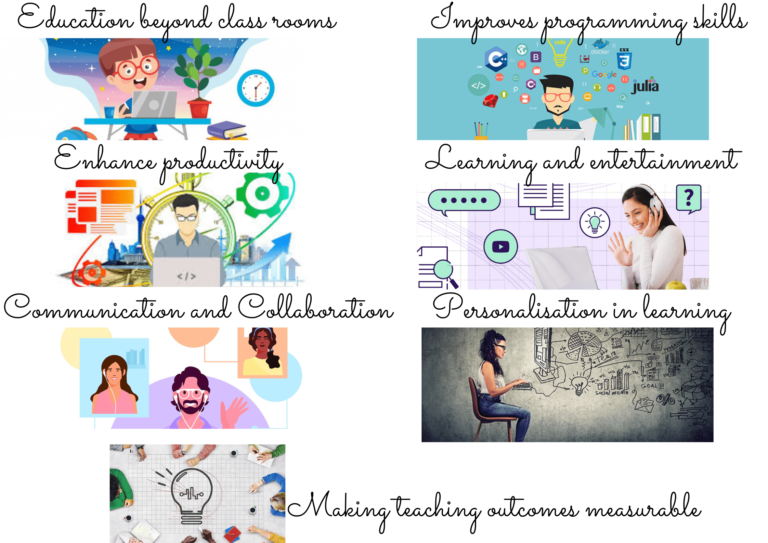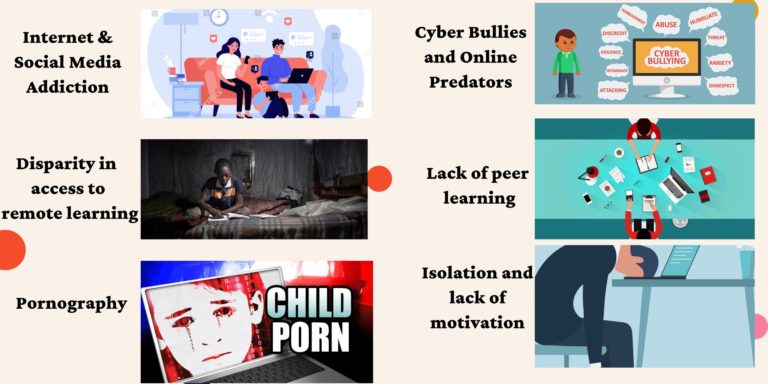Children and Safe Internet Usage for Learning
Technology is evolving at a very rapid rate. It has changed the way of learning for students across the world. Thanks to the use of the Internet, students are able to continue their education during a crisis like Covid -19. As the pandemic resulted in a drastic shutdown of schools, students had to continue their education on digital platforms.
Online education has become an inevitable part of today’s world. Even before the coronavirus pandemic, there was a high adoption of technology in education. Whether it’s virtual tutoring, learning management or video conferencing, there has been a significant surge in the use of the Internet. Many wonder whether the adoption of virtual learning, the Internet, and online learning platforms will continue to persist even after the pandemic.
The Internet can be a great place for students to learn, communicate and collaborate. It offers numerous benefits such as providing them with advanced study materials, extra resources and educational games. With ed-tech apps, teachers can utilize features such as live chats and video conferencing to assist the students in sharpening their skills.
While technology improves productivity and makes life easier, it can also create various negative impacts. Internet usage brings threats such as cyberbullying, predators, identity theft, inappropriate content and so on. They pose various risks to a child’s safety and emotional wellbeing. So, in order to be safe online, parents, teachers and kids need to be aware of the dangers. Teaching the students about online safety and explaining the benefits of implementing them would help them continue their online education safely.
Let’s find out the positive side of using the Internet for education:

Education beyond Classrooms
With the help of the Internet, students can quickly access any information. Implementation of online education has provided the students with a heap of digital data. They can search and find the necessary academic materials within a short time. For educational institutions, it is possible to choose various personalized ed-tech apps that suit their academic needs.
Improves Programming Skills
Online education provides a great chance for students to improve their programming skills. Many websites, apps, online coding tutors, and after-school programs are designed to teach coding more easily and engagingly. By learning the basics of programming, children will visualize more abstract concepts in a fun format. It also increases their problem-solving skills.
Enhances Productivity
The Internet makes it easy and convenient for students to perform their duties more productively. Online tools such as virtual reality, augmented reality, gamification of learning, animated lessons etc., contributes to faster and better learning. With the help of online resources, students can finish their assignments within a short period. The Internet also provides various personalized tools that fit the style of every student. By utilizing such tools, teachers can help each student in making improvements in their learning process.
Learning & Entertainment
With online education, students become more active. They receive additional possibilities that bring enjoyment and fun. Lectures, study materials and other educational content that are visually attractive keep the learners engaged while making the process entertaining. Most ed-tech companies offer numerous customized applications that are designed to make virtual education more interesting.
Communication and Collaboration
The introduction of virtual education has made the students more self-dependent. It has also promoted collaboration among students. Online collaboration tools and social networks contribute to improving communication and avoiding the feel of isolation. With such tools, students can easily unite to solve their problems.
Personalization in learning
Personalized learning is one of the greatest benefits of online education. It is difficult for the teachers to identify students’ learning capabilities at a granular level in conventional learning methods. Each student has learning gaps like how they perceive each lesson, chapters, and other areas where they need more clarification, individual doubts or questions on various topics etc. With online teaching and the introduction of ed-tech apps, the tutors can focus on the individual needs of each and every student. Apart from individual care from the tutors, the data-rich environment of online programs also helps in providing additional resources for students who are struggling with issues in learning. This helps in having a personalized gap-to-goal plan for each student.
Making teaching outcomes measurable
Educational technology solutions offer numerous options for evaluating students’ performance and finding the effectiveness of online tutoring. These include online quizzes after each lesson, feedback polls, open-ended essay questions, personal interviews of each student, game activities, and much more. Such tools act as general and personalized indicators for teachers to evaluate the skills & knowledge of students and improve their teaching process. The measurable outputs of each student can come personalized so that teachers can assess them at individual levels.
How can the Internet become a threat?

Like all other innovations, technology has its drawbacks. There are many challenges to overcome. Those include the serious threats mentioned below.
Internet & Social Media Addiction
Most of the students get easily addicted to modern gadgets and the Internet. They are getting obsessed with entertainment channels such as video games, social media and various non-academic stuff results in wastage of time and energy. It also distracts them from their studies. Uncontrolled access to such platforms increases the risk of addiction, which can adversely affect their academic performance.
Lack of peer learning
Peer learning makes students interact with each other and attain their educational goals. It is a good method to support student learning since students can learn through discussions, suggestions from peers, group activities etc. Online education results in a lack of direct interaction between students. It also brings a number of challenges in peer learning like teachers being involved almost every time, technological advancements in education reducing the chances of peer learning etc.
Pornography
Online pornography can be a real challenge for tutors and parents. Pornography is considered offensive and exploitative in regard to the youth. Students, especially teens may find inappropriate content like pornography and vulgar language on the web. They might get involuntarily exposed to such content and later it can become a serious issue that affects their learning process.
Cyber Bullies and Online Predators
These internet users commit sexual abuse or exploit children for inappropriate purposes including violence, unwanted exposure of materials, personal insult and harassment. Students are targeted explicitly by such individuals because the kids may not always think about the consequences of their actions while sharing personal information with them.
Isolation and lack of motivation
Getting addicted to technology and spending most of the time on the internet results in social isolation and reduced physical collaboration. Children won’t be able to interact in a way that enhances their social skills. Lack of social interaction can demotivate the child from learning and handling tasks. Technology also provides room for cheating during an event like an exam, which results in students not putting in any effort and simply copying the work of others.
Disparity in access to remote learning
In India, there exists a great inequality in access to online education. Studies show that 90% of students living outside tier-1/ tier-2 cities don’t have personal computers/laptops at home. Such inequalities can be a real threat to learning. However, a vast majority of them have access to smartphones in their home. While a computer would be preferable for online education, a smartphone could also serve the purpose. So, unless technology solutions are not smartphone-based, adoption/usage could be threatened due to the lack of gadgets.
Guidelines for minimizing the risk:
Parents and teachers are required to learn about all the potential threats of the Internet to advise the students about the same. Spare your time to spend online together with kids. Teach the kids to keep their personal information private by not sharing it with anyone. They also shall be thoroughly advised on what to do and what not to do on the Internet.
Stay informed about your child’s activities on the web. If children accidentally encounter any problem, don’t blame them, take it seriously and provide all the necessary support.
If possible, have the computer located at your sight. Ensure that your system supports online protection tools such as antivirus software and defenders that helps to block unwanted access and provide protection from malware.
Educate the children about the threats of using the Internet and the dangers of interacting with strangers. Keep communicating with them regarding these topics, so that they feel comfortable with the conversations and feel confident to let you know when they stumble upon an issue.
The school community can set up computer labs at schools that help in facilitating online education. Apart from that, the institution shall also take convenient additional measures that support the implementation of resources required for students for their education. One of the major examples can be getting the computer labs equipped with tablets and computers. This enables technology platforms for students who cannot afford computers at home.
All teachers are expected to be proficient with computers, safety precautions, rules, and practices that need to be observed in a computer laboratory.

